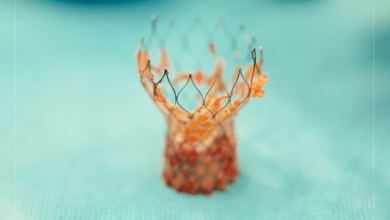Search results
Author(s):
Giuliano Costa
,
Enrico Criscione
,
Denise Todaro
,
et al
Added:
3 years ago
Aortic stenosis (AS) is one of the most common valvular diseases in developed countries and its prevalence is projected to increase over the next decade as the population ages.1,2 Transcatheter aortic valve implantation (TAVI) is an established alternative to surgery for treatment of patients with symptomatic, severe AS.3
As the latest multicentre trials have established the role of TAVI…
View more
Author(s):
Hellmuth Weich
Added:
3 years ago
There has been a recent explosion in the field of transcatheter aortic and pulmonary valve replacements, but the atrio-ventricular valves have lagged behind for various reasons with the tricuspid valve undoubtedly the least treated valve of the four. Despite the fact that tricuspid regurgitation (TR) can result in significant symptoms, patients are rarely referred for isolated surgical tricuspid…
View more
Author(s):
Luca Testa
,
Azeem Latib
Added:
3 years ago
Leaflet motion abnormalities (LMAs) are a relatively new entity in the field of transcatheter aortic valves (TAVs).1–4 They can be associated with the thrombosis of the bioprosthesis (TAVT), often leading to dramatic clinical scenarios1 or, on the other hand, they can result in a hypoattenuated leaflet thickening (HALT) and/or reduced leaflet motion (RELM), both usually associated with gradients…
View more
Author(s):
Fadi J Sawaya
,
Lars Søndergaard
Added:
3 years ago
Over the past decade, transcatheter aortic valve implantation (TAVI) has become an established and increasingly-used technique to treat patients with severe aortic valve stenosis (AS). Studies have revealed that clinical outcomes obtained with TAVI are equivalent to surgical aortic valve replacement (SAVR) in patients with a high risk profile.1,2 The Placement of Aortic Transcatheter Valves …
View more
Author(s):
Angela McInerney
,
Rafael Vera-Urquiza
,
Gabriela Tirado-Conte
,
et al
Added:
2 years ago
Author(s):
Ren Jie Yao
,
Matheus Simonato
,
Danny Dvir
Added:
3 years ago
In the context of an ageing population, care for valvular disease is becoming an increasingly important field. A recent large-scale population-based study found the prevalence of valvular disease to be 8.5 % in the 65–74-year-old group and 13.2 % in those over 75 years. 1 While mechanical surgical valves are more durable, bioprosthetic valves are often used as they are less thrombogenic and do…
View more
Author(s):
Marcel Weber
,
Jan-Malte Sinning
,
Christoph Hammerstingl
,
et al
Added:
3 years ago
Transcatheter aortic valve replacement (TAVR) has emerged as the treatment of choice among inoperable patients with symptomatic severe aortic stenosis and as a treatment alternative to surgical aortic valve replacement (SAVR) for high-risk surgical patients1–3. Subsequently, the number of patients undergoing TAVR worldwide is steadily increasing and the complications related to valve implantation…
View more
Author(s):
Basel Ramlawi
,
Mahesh Ramchandani
,
Michael J Reardon
Added:
3 years ago
Symptomatic severe aortic stenosis or insufficiency have no effective medical treatments and carry a dismal prognosis if left untreated. Since the first aortic valve replacement in 1960, hundreds of thousands of lives have been saved and improved by this procedure. Until recently, surgical aortic valve replacement (sAVR) was the only effective therapy for severe aortic valve stenosis. The recent…
View more
Author(s):
Crochan J O’Sullivan
,
Peter Wenaweser
Added:
3 years ago
Since the first ‘proof-of-concept’ case of transcatheter aortic valve implantation (TAVI) was reported by Cribier and colleagues in 2002, more than 200,000 patients have undergone the procedure in approximately 65 countries.1,2 Since its inception, the majority of patients undergoing TAVI have been considered inoperable or high risk for conventional surgical aortic valve replacement (SAVR) as…
View more
















